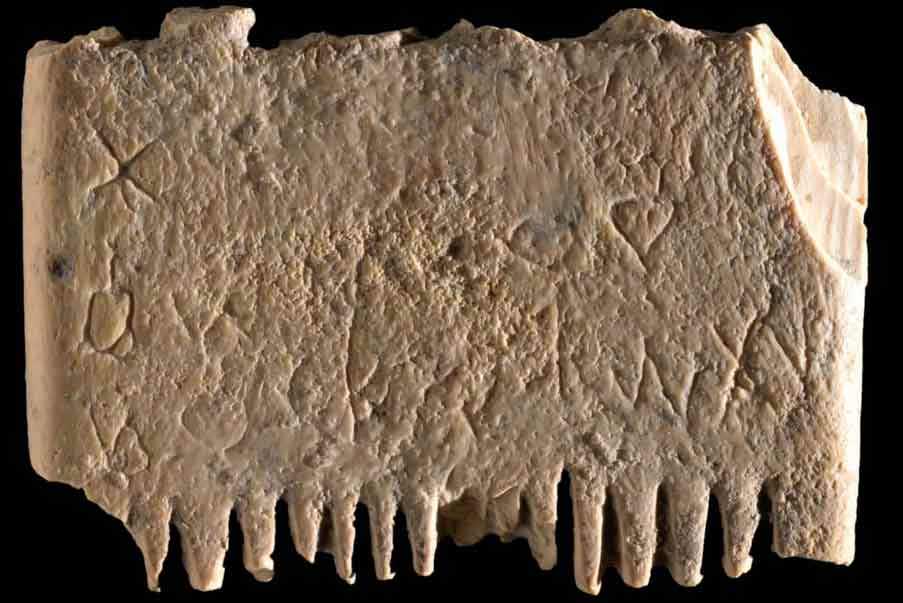The inscription encourages people to comb their hair and beards to rid themselves of lice. The sentence contains 17 letters that read: “May this tusk root out the lice of the hair and the beard.”
Experts say the discovery shines new light on some of humanity’s earliest use of the Canaanite alphabet, invented around 1800 B.C. and the foundation of the all successive alphabetic systems, such as Hebrew, Arabic, Greek, Latin and Cyrillic.
The comb was dug up at Israel’s Tel Lachish by a team from the Hebrew University of Jerusalem (HU) and Southern Adventist University in Tennessee under the direction of professors Yosef Garfinkel, Michael Hasel and Martin Klingbeil. The inscription was deciphered by semitic epigraphist Dr. Daniel Vainstub at Ben-Gurion University of the Negev (BGU) in Beersheba. The ivory was tested by HU Prof. Rivka Rabinovich and BGU Prof. Yuval Goren and found to originate from an elephant tusk.
The ivory comb is small, measuring roughly 3.5 by 2.5 centimeters. The comb has teeth on both sides. Although their bases are still visible, the comb teeth were broken in antiquity.
The central part of the comb is somewhat eroded, possibly by the pressure of fingers holding the comb during haircare or removal of lice from the head or beard.
The comb’s inscription is direct evidence for the use of the alphabet in daily activities some 3,700 years ago. “This is a landmark in the history of the human ability to write,” Garfinkel said.
To date, 10 Canaanite inscriptions have been found there, more than at any other site in Israel. The city was the major center for the use and preservation of the alphabet for more than 600 years, from about 1800 BCE to 1150 BCE.
pll/jcm/mml










